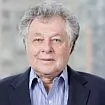Warsaw Orthopedic, Inc. v. NuVasive, Inc., No. 2014-1480, 2015 U.S. App. LEXIS 3133 (Fed. Cir. Mar. 2, 2015) (Dyk, J.). Click Here for a copy of the opinion.
Warsaw sued Nuvasive for infringement of two patents related to spinal implants. Nuvasive counterclaimed for infringement of a patent related to a surgical instrument. At trial, the jury found that the asserted claims of Warsaw's '973 patent were not invalid (infringement was not disputed), the claims of Warsaw's '933 patent were infringed by Nuvasive under the doctrine of equivalents (validity not disputed), and the asserted claims of Nuvasive's '236 patent were infringed by Warsaw. On the verdict form the jury awarded Warsaw $101 million in total damages, labeled "Lost Profit Damages (with royalty remainder)" and specified royalty rates for each patent.
Both parties filed motions for JMOL or a new trial. Warsaw also moved for a permanent injunction against Nuvasive and for supplemental damages. Nuvasive challenged the jury's calculation of damages owed to Warsaw. All motions were denied by the trial court. The motions relating to liability and the calculation of damages due to Warsaw were appealed. The Federal Circuit affirmed all of the jury's findings on liability, but it vacated the damages award to Warsaw.
Warsaw does not practice its patented technologies. Instead, it receives three income streams. First, Warsaw sells "fixations" to Medtronic, and Medtronic includes them in spinal implant kits that embody Warsaw's patented technology. Second, Warsaw collects royalties from M Proc and Deggendorf for products that practice the patented technology. Third, Warsaw receives true-up payments from Medtronic. (These are post-hoc payments, required for tax reasons, to ensure Warsaw receives fair-market-value for its bargain). Warsaw's most significant income is from these true-up payments, by which Medtronic effectively remits 95% of its profits on the patented technology to Warsaw.
First, Warsaw argued it was entitled to lost profits from convoyed sales. Because of Nuvasive's infringement, Medtronic's sales of the patented technology were reduced, and Warsaw in turn lost profits on the sales of fixations to Medtronic. The Federal Circuit disagreed, because Warsaw failed to show a sufficient functional relationship between the fixations and the patented technology to justify lost profits from convoyed sales. Warsaw argued that the fixations completed Medtronic's kits for use in a fixation procedure, not that the fixations were functionally related to the patented implant itself. The Federal Circuit characterized this relationship as one of convenience or business strategy, rather than a functional relationship.
Second, Warsaw argued that it was entitled to lost profits for royalties it did not recover from M Proc and Deggendorf. Both companies were licensees who manufactured and sold the patented technology, and paid a royalty to Warsaw. Warsaw acknowledged that it could not recover the profits lost by the licensees, but argued that it could recover for the royalties it would have collected, but for Nuvasive's infringement. The Federal Circuit again disagreed, ruling that a patentee can only claim lost profits for the lost sales of a product or service the patentee itself was selling, not the sales of other companies. Thus, lost royalties cannot be "lost profits."
Third, Warsaw argued that reduced true-up payments caused by Nuvasive's infringement should be considered lost profits. Warsaw argued that the lost true-up payments represented a royalty from Medtronic to Warsaw for sales of patented products. However, it was unclear what payments were for the patented technologies and what payments were for management fees or licenses for other technologies. The Federal Circuit again disagreed, because lost royalties are not lost profits. Further, the evidence showed that the true-up payments were calculated on a company-by-company basis, rather than a technology-by-technology basis. This made it impossible to determine the portion of any true-up payments that should be attributed to the patented technology.
For all of these reasons, the Federal Circuit vacated the lost profit awards. It also questioned the jury's royalty rates in its "reasonable royalty" award and remanded for further consideration. The verdict form contained only a lump-sum amount of damages and a royalty rate. Critically, the jury did not define the period of time used to calculate the reasonable royalty. In the absence of a meaningful royalty rate, the Federal Circuit instructed the district court to conduct a new trial on damages.
The content of this article is intended to provide a general guide to the subject matter. Specialist advice should be sought about your specific circumstances.






